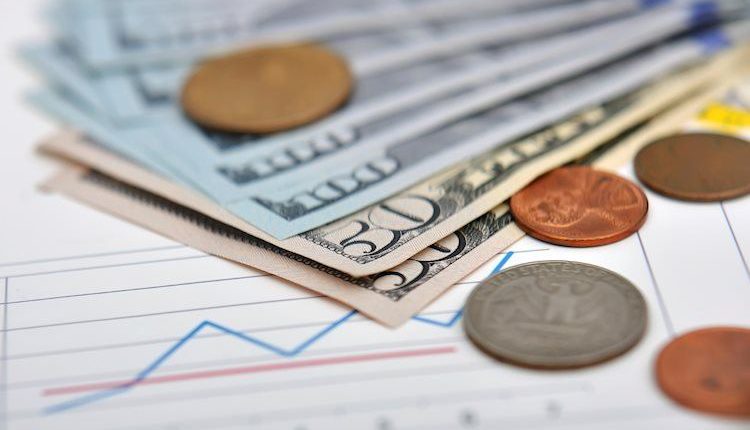- The US Dollar reversed daily gains after a weaker than expected US Nonfarm payrolls report.
- The steady unemplloyment rate and the uptick on hourly wages has tempered the negative reaction on the USD.
- The pair is testing support at 103.85 with Technical indicators show a growing bearish momentum.
The US Dollar Index (DXY) has reversed earlier gains following a well weaker-than-expected US Nonfarm Payrolls (NFP) reading. The impact on the Dollar has been moderate, as the market has considered the impact of strikes and the hurricanes Helen and Milton in the final reading.
Nonfarm payrolls have posted their poorest performance since the pandemic, but the steaady unemployment rate and the uptick in hourly earnings have offsett invesdtor’s concerns about a sharp deterioration of the labour market.
The focus now is on the US ISM Manufacturing PMI, which is expected to show a minor improvement, still at levels consistent contraction of the sector’s business activity.
Daily digest market movers: US Dollar ticks up with key US data on tap
- US Nonfarm payrolls have increased by 12K in October, well below the market expectations of 113K. September’s reading has been revised to a 223K increase from the 254Kpreviously estimated.
- The negative impact of the headline reading has been tamed by the steady unemployment rate, which remains at 4.1%, and higher hourly earnings, which rose at a 0.3% pace, from 0.2% in the previous month.
- The ISM Manufacturing PMI is expected to have improved marginally to 47.6 from 47.2 in the previous month. Still, it would remain at levels reflecting contraction in the sector’s business activity.
- Data from the CME Group Fed Watch tool reveals that markets remain are almost fully pricing a 25 bps cut by the Federal Reserve (Fed) next week and a 85% chance of another 25 bps cut in December, up from 76% in the previous days.
- Investors’ bets that former President Donald Trump will win the US presidential election and implement an inflationary policy of low taxes, big spending and tariffs on imports is providing additional support to the US Dollar.
DXY technical outlook: Exploring prices below 103.85 support
The DXY index is testing the base of the last two weeks’ horizontal channel, at 103.85, with the broader bullish trend seems to be losing steam and technical indicators showing signs of a potential trend shift.
The 4-hour chart shows a bearish divergence in the Relative Strength Index (RSI) and price action capped below the 50-period Simple Moving Average (SMA).
These negative signs keep the support area at 103.85 in play. Below here, the next target would be 103.40. To the upside, the index has some resistance at 104.20 ahead of the October peak at 104.63.
US Dollar Index 4-hour chart
Fed FAQs
Monetary policy in the US is shaped by the Federal Reserve (Fed). The Fed has two mandates: to achieve price stability and foster full employment. Its primary tool to achieve these goals is by adjusting interest rates. When prices are rising too quickly and inflation is above the Fed’s 2% target, it raises interest rates, increasing borrowing costs throughout the economy. This results in a stronger US Dollar (USD) as it makes the US a more attractive place for international investors to park their money. When inflation falls below 2% or the Unemployment Rate is too high, the Fed may lower interest rates to encourage borrowing, which weighs on the Greenback.
The Federal Reserve (Fed) holds eight policy meetings a year, where the Federal Open Market Committee (FOMC) assesses economic conditions and makes monetary policy decisions. The FOMC is attended by twelve Fed officials – the seven members of the Board of Governors, the president of the Federal Reserve Bank of New York, and four of the remaining eleven regional Reserve Bank presidents, who serve one-year terms on a rotating basis.
In extreme situations, the Federal Reserve may resort to a policy named Quantitative Easing (QE). QE is the process by which the Fed substantially increases the flow of credit in a stuck financial system. It is a non-standard policy measure used during crises or when inflation is extremely low. It was the Fed’s weapon of choice during the Great Financial Crisis in 2008. It involves the Fed printing more Dollars and using them to buy high grade bonds from financial institutions. QE usually weakens the US Dollar.
Quantitative tightening (QT) is the reverse process of QE, whereby the Federal Reserve stops buying bonds from financial institutions and does not reinvest the principal from the bonds it holds maturing, to purchase new bonds. It is usually positive for the value of the US Dollar.
Read the full article here

